A hoy-hoy and welcome back!! This is part two of our three part blog series! Last blog we talked about knowing your dog! Today we will be discussing researching your camping areas and dog accessories to make your pups more comfortable and safe while camping! Enjoy!!
Research Locations
There is a nice man from Minnesota, I believe, and his YouTube channel is Kenny of All Trades – please check him out! He camps like The Husband and I do. He simply camps. No big adventures, just gets out there, explores the surrounding areas and hangs out at his camp sites that he has meticulously researched (sometimes) because, honestly, he doesn’t want to be surrounded by a lot of people. We have this in common with Kenny. We too, like to look at campsite before we choose to see how close it is to the bathroom, if there is shade, and where the other campers are located? Is it possible to stay away from them? LOL! Yes, we will be social and talk to people, but we prefer to be on our own. LOL. Don’t you judge!! My point is that one should also research not only the area in which you are camping, but also your campsite and the surrounding trails.
Hope: I totally agree! You wouldn’t book a beach vacation without researching the area, hotel, restaurants, and entertainment first. The same applies to a camping trip. Some campgrounds are more dog friendly than others. Did you know that pets are not allowed in Yellowstone National Park? They are only allowed in your car, certain campgrounds, and not more than 100 feet from a road or parking lot. How sad would it be to book a trip to such a grand place only to get there and find out you are stuck sitting at your campsite or driving in your car because you brought your pup. Who wouldn’t want to hike in such splendor without the company of their best furry friend? But since you did your research beforehand and learned of the no dog policy, you elected to have a trusted friend come and doggy sit at your place just this once.
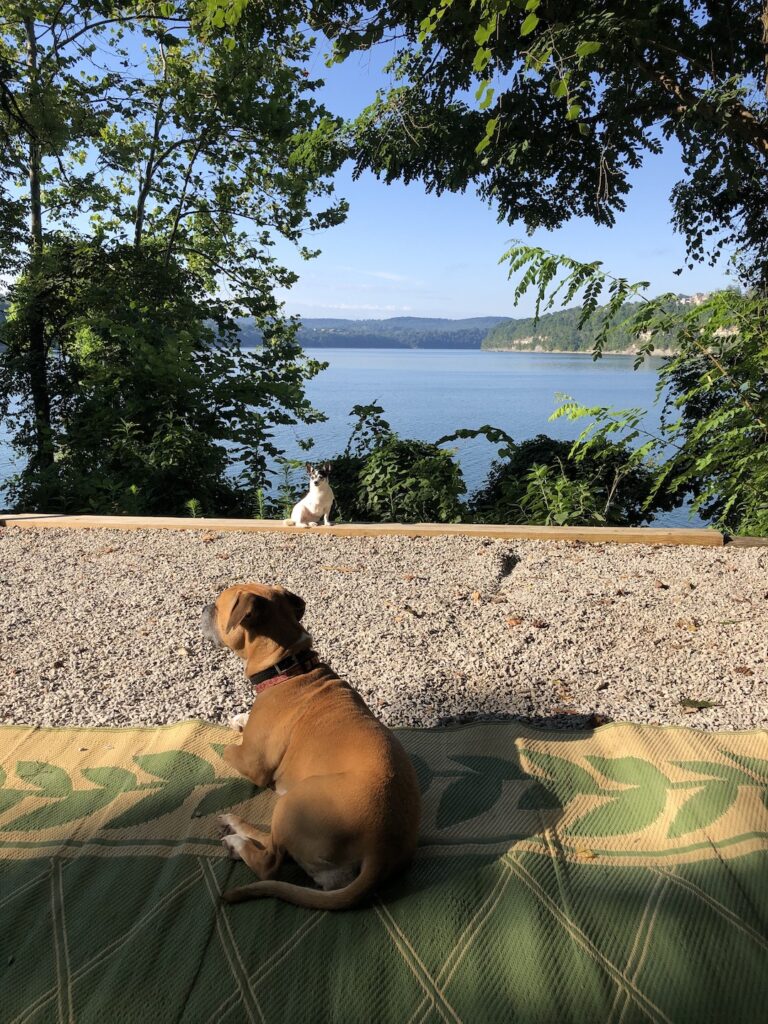
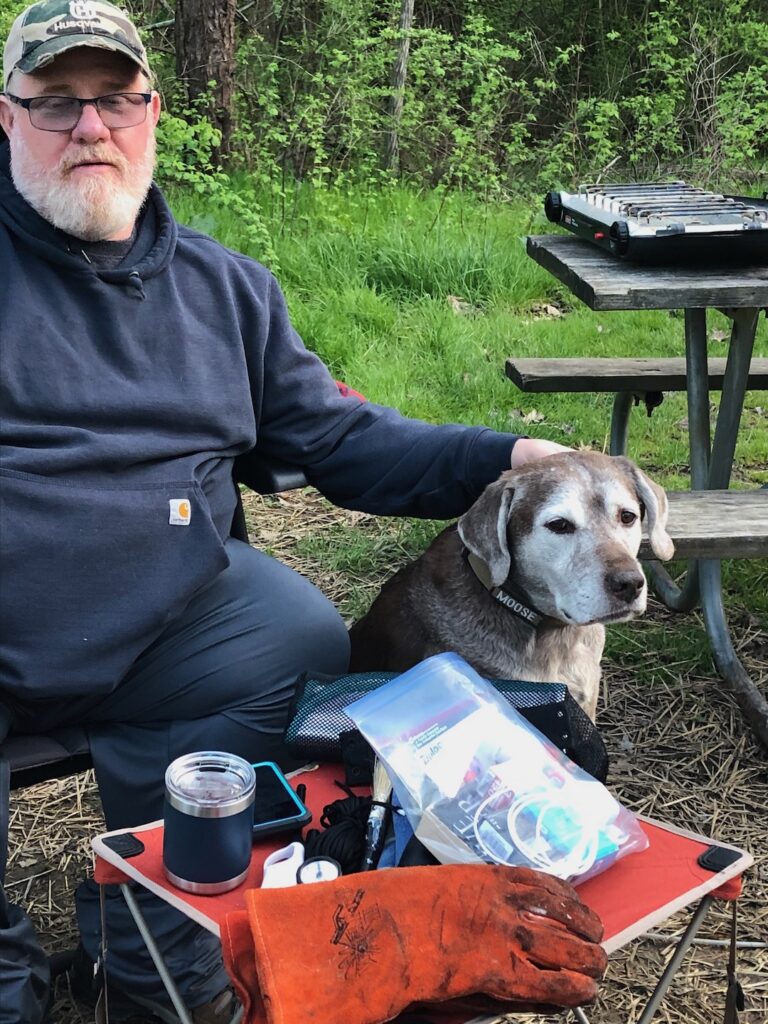
Campsites – For many campgrounds, you can go to their website. Once there, the website will give you information such as shade, position of the sites to the bathrooms, and how close the sites are to each other and if there are trees in-between the sites. Some campgrounds are wooded, and the sites are secluded little bubbles. Other campgrounds are flat pieces of land with mowed lawns – like a cemetery, but instead of headstones, there are campers! HAHAHA.. sorry. The main focus for the dogs, is to make sure that the sites are far enough away from each other; trees are even better, but if not, we do try to pick sites away from the rest (but close to the bathrooms for midnight runs, lol). Sometimes, you can’t help that the sites are close. If they are, use the picnic tables or your chairs to create more separation. Be mindful of how long your lead is, if there are other dogs around you, and the length of their leads.
Hope: My husband and I love to camp in national parks. After determining if dogs are allowed, we book our campsite using the recreation.gov app or website. The great thing about this site is they have a detailed description of the campground and have pictures of each campsite. We spend hours looking at the picture and using google earth to really zoom in to see the campsites, which helps us choose the best spot for us and our pups.
Trails -Living in the Midwest, I honestly thought that dogs could go on any trail we could go on, because that’s how it is in the Midwest! We have been to Indiana, Illinois, Michigan, and Ohio, and we have been able to take our dogs on all the trails in those states. Watching hikers on YouTube has taught us that is not the case out West. In fact, most National Trails don’t allow dogs because they pose a danger to the environment when they step off the trail (which, let’s face it, they do all the time to sniff and snoff). Therefore, if you are heading out West (Arizona, Nevada, California, etc.), do your homework and search to see which parks and trails allow dogs and which ones won’t.
Hope: The following are some options for reviewing the trails before setting out. Stop at the visitor’s center or ranger station to get some maps and general info. This is a great way to get information on the local trails after arriving to the area. Before you go.. Check out these apps that give reviews and info from other hikers, AllTrails, National Park Trail Guide, Outbound, and many others. And best of all, word of mouth! Talk to friends that have been on hiking trips with their dogs and see what they recommend.
Once you have determined whether your dogs can hike with you, it is time to research the trails. Are you and your dog able to traverse this trail? I include yourself because let’s face it, more than likely, your dog would be able to figure out any trail; you, on the other hand, may or may not, depending on your athletic abilities. LOL. A lot of the trail research apps will tell you if dogs can/should perform trails or not. If they don’t, read the reviews and comments. And hey, if you and your pup get out there and they (or you) can’t do it, TURN AROUND! Always remember this for any hiking trips: it is okay to turn around and admit defeat. In admitting this, you will save yourself and your dog a lot of trouble and possible injury. Do your research, and your dog’s health and safety as well as yours depend on it.
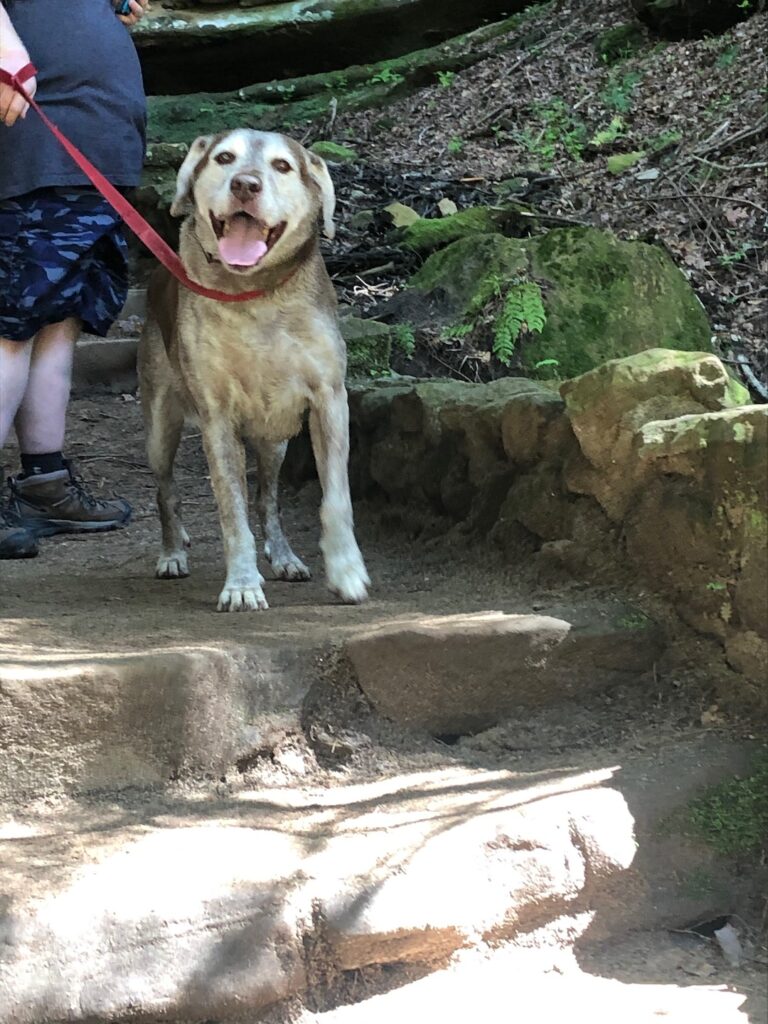
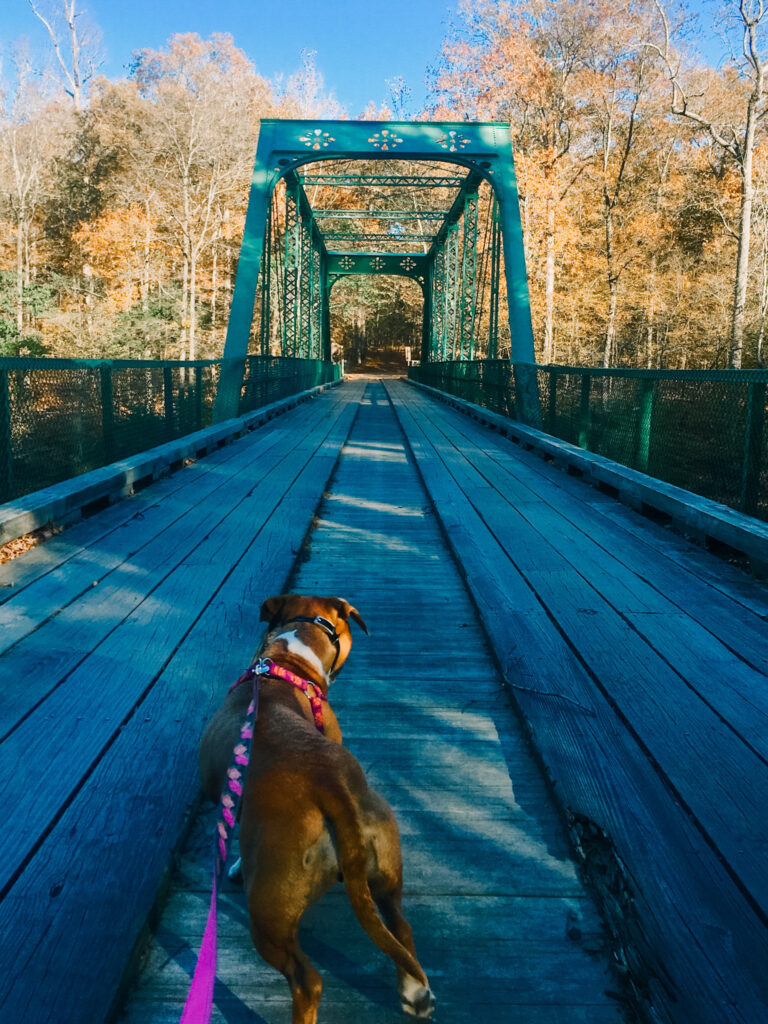
Funny Story Time: Recently, The Husband, Pibble, and I went to Garden of the Gods in southern Illinois to camp and hike. It was breathtaking. We were following a trail app that has been 50/50 on helping with trails and staying on trails. This time, it did a bang-up job. We were getting deeper and deeper into (for us Midwesterners) and up pretty steep “mountains” – I use this term very loosely. I’m questioning the route it is taking us on because it is getting more and more challenging. Then suddenly, we come across a pretty large chasm in the rock that would require us to jump over from one side to the other. I promptly say absolutely not! Not with my teeny tiny legs! I didn’t know if I could jump that, and I started to panic if Calliope would be able to jump it (she was probably the only one of us that could). So, we did the right thing and turned around. LOL. Conclusion and lesson to be learned: if you are unsure, turn around. LOL.
While on a trail with your dog, always keep two things in mind: poop bags and leashes. Always keep poop bags with you. I don’t know about your dogs, but both Moose and Calliope love to poop at least twice, if not three times, while on a hike (or walk). We have a container that attaches to their leash that holds a roll of them; that way we always have bags on hand. We have forgotten bags or ran out, and it is a panic inducing, stressful event that I choose not to have. LOL, therefore, I keep poop bags in my coat or jacket pockets as well. HAHAHA. The other very important item to always take with you on your hike with your dog? Your Leash. Your. Leash. I will talk more about what type of leashes in the next section. Just another reminder to always keep your dog on a leash. Always. Please. Your dog might be the next Lassie, who always listens and blah blah blah blah. But one run in with my Moose, and you will regret your decisions quickly. Just because your dog is friendly, doesn’t mean all dogs are. This is especially true if the trail (which many are) is narrow, with little room for passing with dogs. So, please make this easier for all of us and just keep your dog on a leash. Thank you.
Hope: Bridget brings up two important items needed to be a responsible dog owner on any hike. It doesn’t matter how long or short a walk/hike you may be on, always take poo bags and have your dog on sturdy leash. Depending on the length, location, and weather of the hike there are other items to consider that Bridget will be mentioning as you keep reading.
Dog Accoutrement
I believe that taking your dogs camping is similar to being a first-time parent: you are never wholly prepared. Moose was the first dog both The Husband and I had taken camping. Ever. The first time we took him, we definitely made many trips to the Dollar Store. Not only on that first camping trip, but for that first year! LOL. We realized that some of the gear we thought would be great or even “good enough” was not. We also found the need to add things for his comfort, such as a box fan to keep Moose cool. Honestly, the same goes for Calliope and her needs because we realized that her needs are completely different than Moose’s. Before I get ahead of myself, let’s start with the basics!
Here is a list of items that we typically bring with us (for both dogs):
- Lead for the campsite
- Leash
- Medication**
- Water
- Bowls for food and water
- Poop bags
- Food
- Treats
- ID/tags
- Dog cot^^
- Harness
- First Aid Kit
Hope: While there are general items all dogs and owners need for a safe and fun camping experience, Bridget is right about each dog having different personal needs based on breed, personality, size, and athleticism. I have camped and hiked with many types of dogs and have found it vitally important not to overestimate their individual capabilities or tolerance for such outings. Martin was an athletic three-legged couch potato. He preferred to laze about and not go on walks. In contrast, one of my current furry kids is a Border Collie mix. If you know anything about this breed, you are already shaking your head and smiling. Her name is Bonny, and she is one silly, energetic girl. She can hike for hours and hardly ever gets cold in winter weather. Additionally, my three-legged chihuahua (yes, you read that right, I have had two tripods) loves going on walks in nice weather while being carried in my left, not the right, arm. I say all this to show how unique each pup can be and how, with their help, we can tailor their hiking/camping needs.
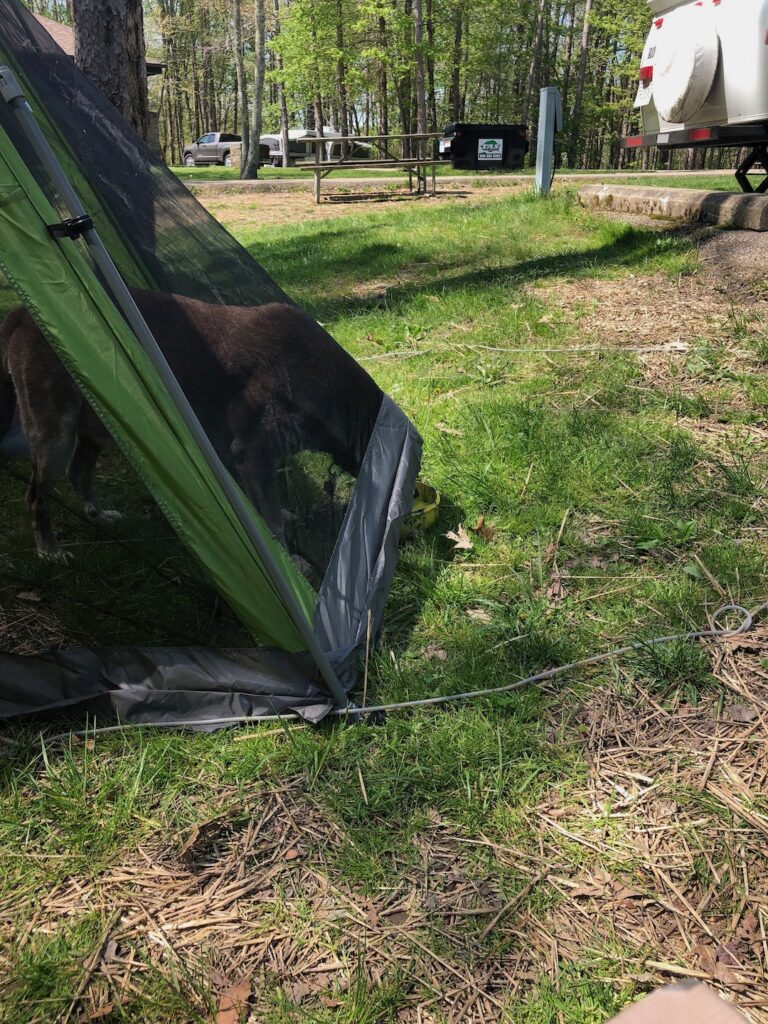
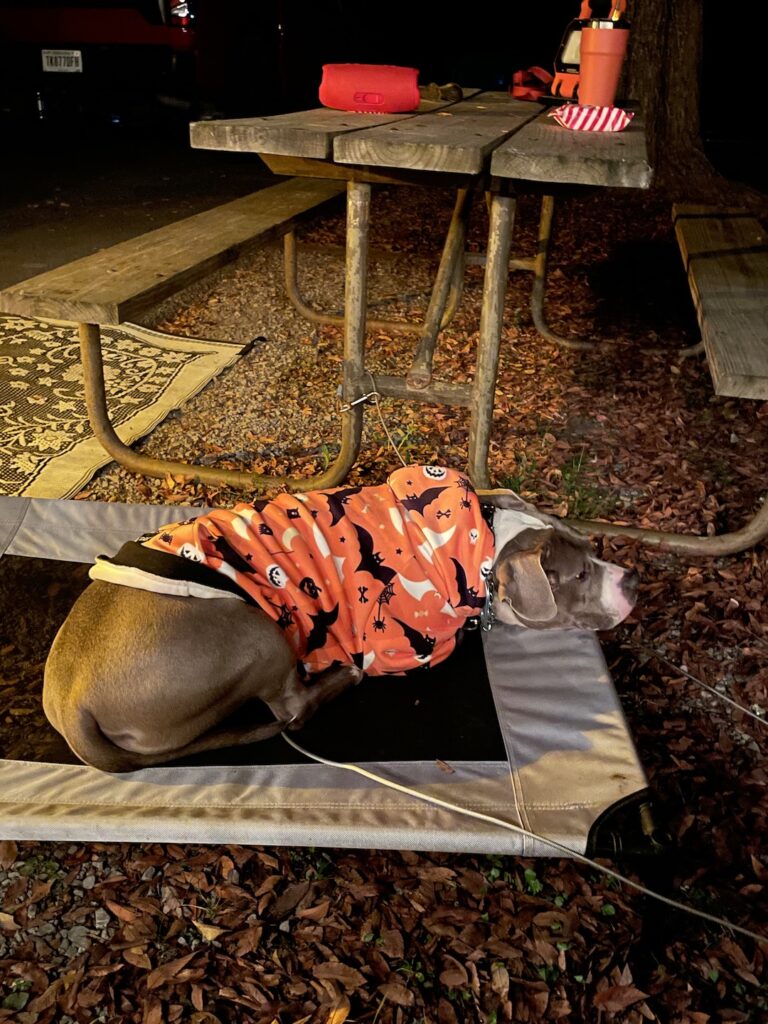
**Let’s talk about medication! I am a person that has been sick my whole life (with allergies). That being said, I have had to pack medications with me pretty much my whole life. Therefore, I was fairly prepared when our Moose became diabetic and needed medications as part of his camping supplies. BUT! If you are not used to packing medications, make a list! Some things, like insulin, you can’t just hope to find at the local store like Benadryl. Remember: Life is not perfect, and that is okay. On one trip, we were driving home and got caught in traffic creating the need to stop at a random Lowes parking lot to feed and give poor Moose his insulin. Talk about getting crazy looks. Good times. But we did it and he got his medication. But in general, make yourself a list – heck, I make a packing list for everything when we go camping: from food to clothes to medications (for humans and canines alike).
Hope: First aid is one of those things that tends to go on the back burner of priorities. You know it’s important and realize having a basic kit and understanding of emergency care could come in handy. But, as most of us tend to do, we get excited over picking the perfect camping spot or trail, choosing the best outfit and matching bandana for your pup, or just get overwhelmed by packing the usual necessities like food and water. One way to be prepared is to build or buy a premade all-encompassing first aid kit. I also recommend having a mini kit to take on hikes. In addition to having a well-stocked first aid kit you can go a step further by taking a basic dog first aid class that includes basic lifesaving skills such as CPR. I have included a few helpful websites that highlight what to have in a first aid kit, places to buy ready-made kits, and websites offering pet CPR. I would also add that in my own kit, I include Benadryl pills and liquid (for allergic reactions at 1mg per pound of body weight), peroxide (to induce vomiting), a muzzle (pain can make even the sweetest pup bite and lash out), Karo syrup (add to water or give directly in case of shock), and a can of pumpkin (for when diarrhea strikes). The last thing I will add is the importance of knowing where the nearest 24hour emergency pet hospital is located.
First aid training: https://www.redcross.org/take-a-class/first-aid/cat-dog-first-aid
Wilderness First aid training: https://www.petemergencyacademy.com/product/k9wildaid-wilderness-first-aid-for-dogs/
Ready made First aid kit: https://www.petemergencyacademy.com/product/new-60-pc-deluxe-pet-first-aid-kit/
How to build your kit: https://www.preventivevet.com/dogs/how-to-easily-put-together-a-pet-first-aid-kit
^^ I am going to talk about our dogs’ comfort in the next section. I want to mention that I highly recommend getting your dog a Dog Cot. I really wish I would have known about them for Moose. He overheated very easily in the summer, and this would have been great for him! It sits up on legs, which allows air to circulate under them, cooling off their tummies. They also come with sun shades to stop the sun’s unrelenting rays. If that’s what they want. Calliope does like to lay in sun puddles. LOL. But, I do highly recommend this for all dogs as it also keeps them off of the ground – if that is something they want. LOL.
Hope: I love the cot-style dog bed! I have several for my pups and find they are good for all seasons. They keep the dog off the cold or hot ground and off the rocks or dirt that cover the ground of most campsites. I found my dog cots on Amazon for a great price. They are well worth the investment!
Can we discuss leashes? I want to talk leashes because we recently purchased a new leash that I cannot wait to tell you about! Before I get ahead of myself, we will discuss the old model of leashes (LOL), aka the regular old leash. They are tried and true. I know people that use the very long (or retractable) leashes. Again, know your dog. I would have been too nervous with Moose to use that; I don’t think I would have been fast enough to reel him back in before he got to another dog. Recently, we purchased the hands-free leash for Calliope. What the heck is that you ask? It’s a leash that clips around your waist and has a bungee portion to ease any pulling. It’s amazing! We Took it on its maiden voyage when we hiked for my birthday. It was great! Calliope, weirdly, didn’t pull as much or as hard. My hands were free, so I was able to walk and balance myself better and picking up poop was a breeze!
Disclaimer: Honestly, I don’t know if I would have been able to use this for Moose. Which sounds weird because Calliope is just as strong even though she is smaller and faster, but I feel like when Moose was ready to go after something, he was ready. Now. When I would walk him, I would wrap his leash all around my body and leverage myself when he tried to take off, but that was around my hips and legs more than my waist. I feel like he might have pulled me and then dragged me along with him. Or he would have broken the leash. I don’t know. I do know, for Calliope, I LOVE this thing. LOVE IT.
Hope: There are two things I will add to the topic of leashes. One, never use a flexi lead. I have seen dogs run into the road or up to a strange dog while on these long flexi leads that give the owner zero control over their dog. In the veterinary world, these leads are called an HBC leash… Hit By Car Leash. I have seen too many large dogs rip the lead out of their owners’ hands and run off with the lead bouncing behind them. I have also seen owners try and grab the thin line of leash with their hand and receive a nasty rope burn to their hand. If you have one of these leads just toss it in the trash. The second thing I would like to add is the use of the long line on my border collie mix. I never use the long line when walking in high traffic areas or when the trail is narrow or line of visibility down the trail is poor. I never take chances in setting my dog up for failure, and when in doubt of what leash to use I always grab my trusty 6ft lead. Like Bridget said, know your dog and what is safest for them, is in your capability, and what is best for the type of walk hike you are taking.
Where do we get our dog stuff? A lot of the everyday items like bowls and stuff, we got from the Dollar Store. LOL. I know, fancy. Leashes, collars, and such are from Ruff Wear: they have quality items that hold up! We have had two very strong dogs. I need to know that their leashes and collars will hold up and not break on me (as has happened to me with both dogs). Calliope’s clothes are primarily from Darren and Phillip, Chewy, and Spark Paws. I will add one more note before we move into the next section. For food containment, we have always placed our dog’s food in plastic bags and tossed the bags away when done. The Husband and I are trying to be more conscious of what and how much we throw away, especially while camping. We have started using Stasher Bags (reusable containers, similar to plastic zip bags) for our own snacks and for Calliopes food. So far, I am liking them, even though I have to get used to washing them out and then drying them (that’s right, I can’t be lazy and just throw them away). LOL. Okay! On to the next section, which, kind of merges from this section as I feel they are very similar. But not.
Hope: For many pet items you can be thrifty and not break the bank by shopping at the dollar spots like Bridget mentioned. You can also find great things at thrift shops. Things like water dishes, blankets, and poo bags are not a big deal to buy on the cheap. What does matter and pays to invest in quality brands are leash and collars, dog back packs and harnesses, dog shoes, food and treats, and outdoor clothing for the pets that need them. Amazon carries a selection of items, but be sure to read the reviews and be prepared to return the item if it doesn’t stand up. Ruff Wear is a great brand that Bridget mentioned. I have a slip lead by them that lives in my car for emergencies that I bought about twenty years ago (no joke!). Ultimately, gear for your pup comes down to trial and error, and experience.

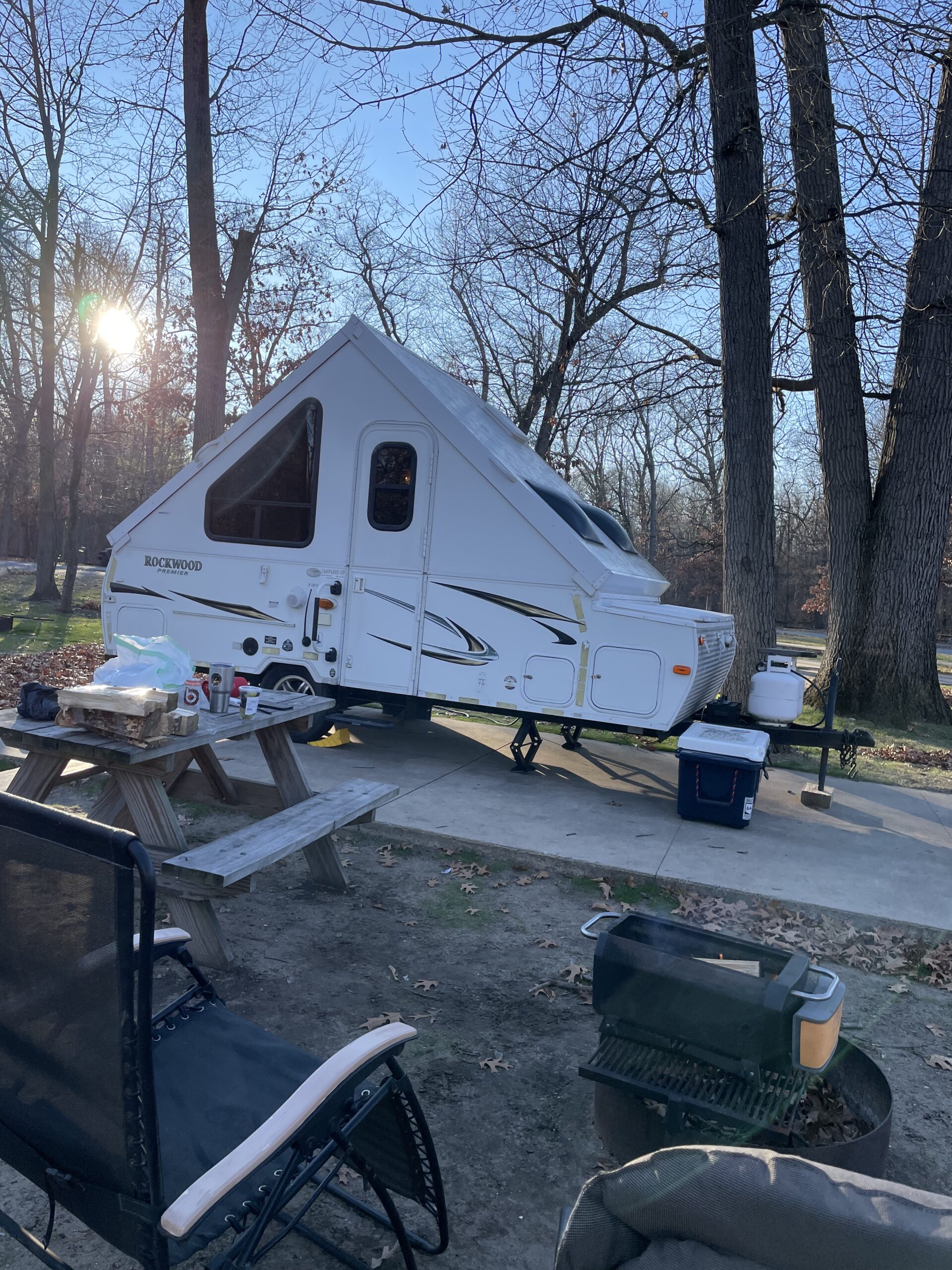
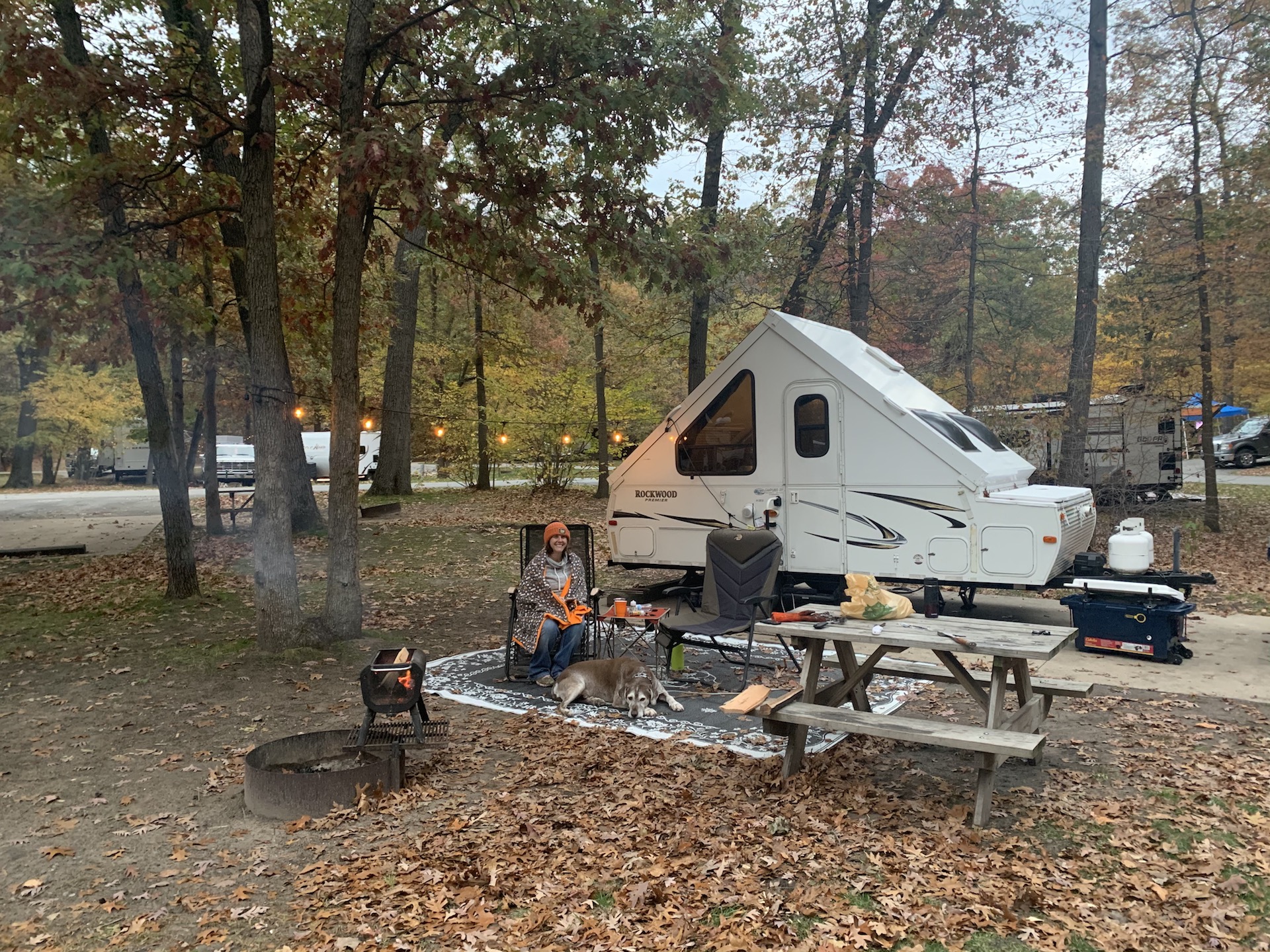
Thanks for the first aid kit tips!
You are welcome! Thank you for reading and enjoying!